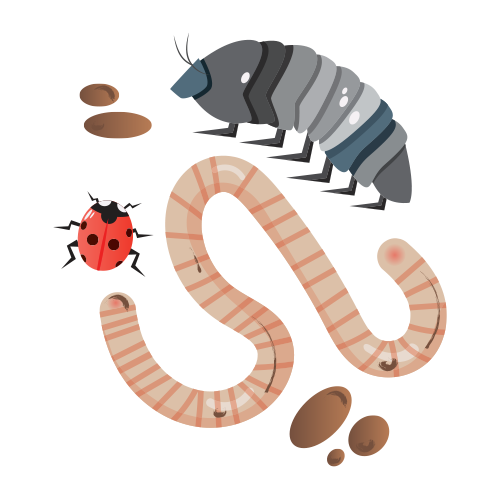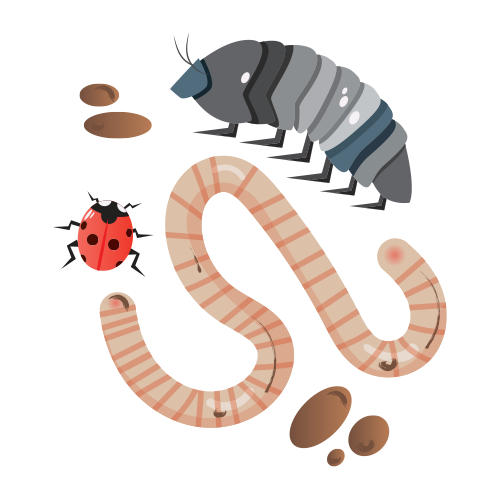
Bug hunt
Explore the outdoors with tamariki, they love to be outside. A bug hunt gives them opportunities to develop their eye-hand coordination, expand their thinking and their rich vocabulary.
Why do it?
- Use large and small muscles while in the fresh air.
- Talk about how things are the same or different, bigger or smaller.
- Encourage more complex conversations and use language that helps to expand their thinking and their vocabulary.
- To give them opportunities to practise their eye-hand coordination.
How to do it
Kei i a koe: He kōata whakarahi, ō kōhatu koi rānei
You might have: A magnifying glass or you can use your bionic eyes
- Haere ki waho ki ngā wāhi e mōhio ana koe he ngāngara kei reira – kei raro toka, kei ngā kohinga rau rākau, keria rānei he rua ki tō māra.
Head outside to places you might have seen bugs – under rocks or inleaf piles, or dig a hole in your garden. - Āta mātakitakihia ngā ngāngara – he koemi, he tūoma rānei? Ka kaute 1, 2, 3, 4 …
Watch the bugs carefully – do they wriggle or scuttle? Count them 1,2,3,4… - Ina mutu ana koe, whakahokia ngā mea i nekehia e koe, he toka i nekehia, te whakahoki i ngā rau, i ngā paru, kia noho pai tonu a rātou taiao.
Once you’re finished watching bugs, replace any rocks, dirt and leaves back so as not to disturb their home too much. - He mahi anō: Hāngaia he puni ngāngara mā te whakatūtū haere i ētahi rākau, ētahi rau ki tētahi wāhi o tō māra.Extra: Make a bug hut by piling up some sticks and leaves somewhere in your garden. Keep checking to see if any bugs have moved in.
Using more te reo Māori
| Te reo Māori | English |
|---|---|
| Ngāngara | Insect |
| Toka | Rock |
| Taiao | The natural world |
| Karu | Eye |
| Kari | To dig |













